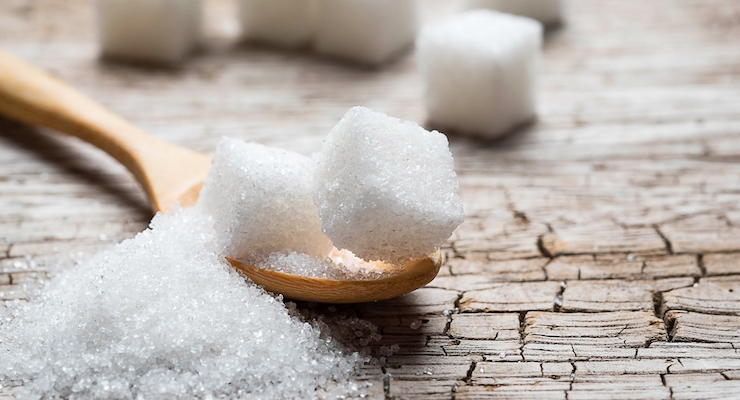11.24.20
To date, very little is known about the neurological connections between perceptions of taste, and how they influence feelings of satiety. However, one study seemed to confirm preliminary evidence that sweetness, regardless of the associated caloric load, could potentially trigger feelings of satiety and make a difference in the amount of food people choose to eat on a caloric level.
A blinded, crossover clinical trial published in the journal Nutrients, which enrolled 27 healthy men between the ages of 18 and 45, administered either a 10% glucose or sucrose solution, or one of the sugar solutions supplemented with lactisole, a substance which binds to the subunit of the sweet receptor and dulls the perception of sweet taste. Despite different types of sugar, all solutions with or without lactisole had the same caloric content.
Two hours after drinking each of the test solutions, the participants were allowed to have as much breakfast as they wanted. Shortly before and during the 120-minute waiting period, the researchers took blood samples in regular intervals and measured their body temperature.
It was found that, after the consumption of a sucrose solution that contained lactisole, the test participants had eaten about 100 calories more on average compared to the group which drank a sucrose solution without lactisole. Additionally, the lactisole-sucrose group showed lower body temperature and reduced plasma serotonin concentrations. Serotonin, among other functions, has an appetite-suppressing effect.
In contrast, the researchers found no differences between the glucose solution group, and the group which had a glucose-lactisole solution, in terms of caloric energy intake during the breakfast.
“We do not know yet why we could not observe the lactisole effect with glucose,” Kerstin Schweiger, the study’s primary author, said. “However, we suspect it is because glucose and sucrose activate the sweet receptor in different ways. We also assume that mechanisms independent of the sweet receptor play a role.”
“So, there is still a lot of research needed to clarify the complex relationships between sugar consumption, taste receptors, and satiety regulation on the molecular level,” Veronika Somoza, co-author of the study, said. “Sweet receptors are also found in the digestive tract, and little is known about their function there. The first steps, nevertheless, have been taken.”
A blinded, crossover clinical trial published in the journal Nutrients, which enrolled 27 healthy men between the ages of 18 and 45, administered either a 10% glucose or sucrose solution, or one of the sugar solutions supplemented with lactisole, a substance which binds to the subunit of the sweet receptor and dulls the perception of sweet taste. Despite different types of sugar, all solutions with or without lactisole had the same caloric content.
Two hours after drinking each of the test solutions, the participants were allowed to have as much breakfast as they wanted. Shortly before and during the 120-minute waiting period, the researchers took blood samples in regular intervals and measured their body temperature.
It was found that, after the consumption of a sucrose solution that contained lactisole, the test participants had eaten about 100 calories more on average compared to the group which drank a sucrose solution without lactisole. Additionally, the lactisole-sucrose group showed lower body temperature and reduced plasma serotonin concentrations. Serotonin, among other functions, has an appetite-suppressing effect.
In contrast, the researchers found no differences between the glucose solution group, and the group which had a glucose-lactisole solution, in terms of caloric energy intake during the breakfast.
“We do not know yet why we could not observe the lactisole effect with glucose,” Kerstin Schweiger, the study’s primary author, said. “However, we suspect it is because glucose and sucrose activate the sweet receptor in different ways. We also assume that mechanisms independent of the sweet receptor play a role.”
“So, there is still a lot of research needed to clarify the complex relationships between sugar consumption, taste receptors, and satiety regulation on the molecular level,” Veronika Somoza, co-author of the study, said. “Sweet receptors are also found in the digestive tract, and little is known about their function there. The first steps, nevertheless, have been taken.”




























